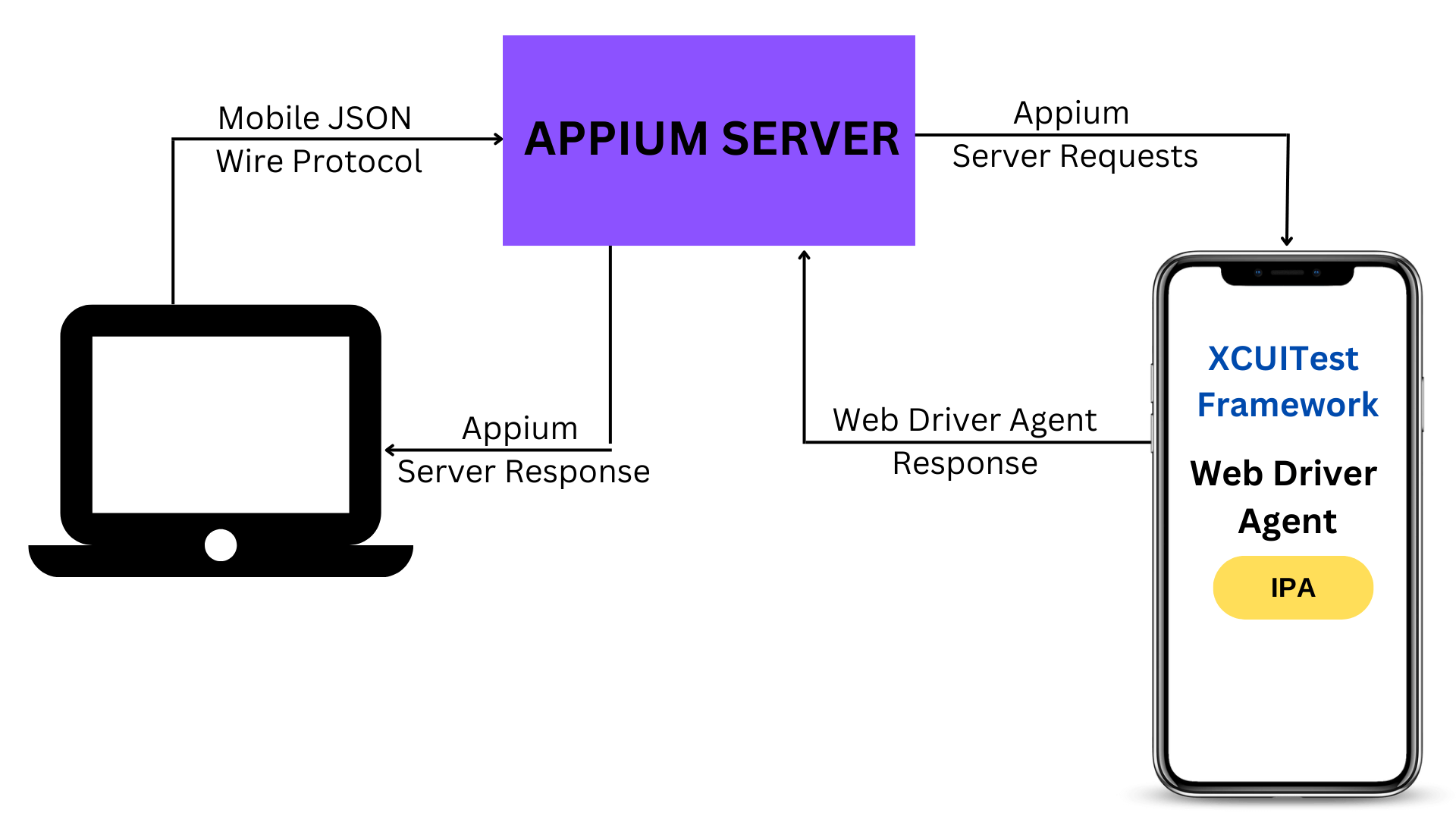How to Set Up a Robust Test Automation Framework with Appium
The software development industry always faces a time crunch when it comes to the last stage, which is software testing. If you ask any software development team about their expectations during the software or mobile app testing, they will give some points. These are like testing should be faster, reliable, cost less, have a wide scope, increase testing efficiency, etc via test automation framework. Check out Appium test automation for better results.
Table of Contents
These expectations can not be easily fulfilled with manual testing. So, automation testing is the most preferred way of mobile app testing. It requires some good testing tools and a robust testing framework. When talking about mobile app testing, Appium is the most preferred tool.
In this article, you will first see what Appium is, and its various aspects, like installing Appium, its advantages, etc., and then you will see how to set up a robust automation testing framework with Appium.
Introduction to Appium
Appium is a mobile app testing tool that is very popular among the QA team and software application developers. It allows testing for both hybrid and native applications for iOS and Android devices. Appium on cloud for mobile app testing extends this flexibility by taking advantage of cloud computing’s benefits for testing purposes. Testing through the cloud offers many key benefits, particularly access to real devices and emulators and allowing thorough cross-device, screen size, and operating system testing without extensive in-house device lab setup costs or time savings.
Which framework is mostly used in automation testing?
There are several popular frameworks used in automation testing, including Selenium, Appium, TestNG, Cucumber, and Robot Framework. The choice of framework depends on factors such as programming language, application type, team expertise, and project requirements. Selenium is commonly used for web application testing, while Appium is used for automating mobile applications.
Architecture of Appium
The architecture of Appium follows a client/server model. The server is built on the Node.js platform. It comprises REST API and implementing Selenium WebDriver. The Appium framework bridges a test script and a mobile application running on a physical device or an emulator/simulator. There are three components of Appium architecture, which are as follows:
Appium Client
This component of Appium consists of language-specific libraries or SDKs. These SDKs help the developers create test automation test scripts using Appium. In multiple programming languages, these client libraries provide various methods for tasks, such as locating elements, interacting with UI components, executing gestures, validating expected behaviors, etc.
Appium Server
It works as a bridge in the framework, making mobile application automation possible in the Appium server. The Appium server creates a link between the mobile application and the test script, regardless of whether the application runs in an emulator or on a real device. Initially, the test script sends commands to the server, which converts them into automation actions specific to the various targeted mobile device types using REST API.
End Device
When you are talking about the end device, it refers to the various emulators and simulators or a real device connected to the server where the automated tests are executed. These devices play a very important role as they help to validate the testing parameters such as performance and functionalities of the software application.
Installing Appium
To perform the mobile app testing with Appium, you need to make an environment in your system. Given below are the steps that need to be followed to set up the environment:
- First, you need to install the JDK (Java Development Kit) that helps set the Java variables in your system.
- Then, you need to install the IDE (Integrated Development Kit). You can install the IDE according to your comfort and choice. Some popular IDEs are Eclipse and VS Code.
- After that, you need to install the Appium framework. You can install it by using the CLI (Command-line Interface) or you can also install the desktop application for Appium.
- Then, install the required files, such as drivers, Android SDK, etc., to help execute the testing process for Android and iOS.
- Then, do some necessary configuration set-ups for Appium, such as device name, path for the files, platform versions, etc.
You can install the set-ups for Appium and execute further mobile app testing using the above steps.
What is a Test Automation Framework?
An automation testing framework is defined as a collection of tools and processes that work together to execute the automated testing process of any software application. An automation testing framework togetherly consists of many functions, libraries, test data, etc. Now, let us talk about a robust test automation framework. A robust test automation framework ranks highly on the Software Testing “must-haves” list.
A robust test automation framework helps increase various mobile app testing parameters. If we don’t build the right and robust test automation framework, then the results will be inconsistent test results, non-modularized tests, and maintenance difficulties. So, organizing the test automation framework is essential as it becomes easy to expand and implement in your testing process.
Now, let us see the parameters a robust test automation framework must have. These are explained briefly in the below section.
Scalability of Test Automation
A robust test automation framework should be scalable so the QA team can implement it in various projects rather than on a single project.
Re-portability
A robust test automation framework should have a good reporting capability. So that it allows the test framework engineer to choose a third-party reporting library.
Extendability
You should be able to integrate easily with other third-party tools using the APIs. A robust test automation framework should be easily integrated with security testing tools, web proxy debugging tools, test case management tools, or other global frameworks, making it more efficient and hybrid.
Configurable
A robust test automation framework should be configurable. It should be able to execute the testing scripts in various programming languages so the testing team can choose their preferred language for writing the test scripts.
Benefits of Robust Test Automation Framework
Let us see the benefits of a robust automation testing framework.
- The software application development team and QA team are aware of developing and maintaining the code base as per the set standards since the code is organized in well-defined and properly structured packages.
- The team can integrate various components that help the developers and QA team meet multiple objectives, such as running test cases, reporting the testing results, and capturing the test logs.
- A robust automation testing framework also enhances the efficiency of mobile app testing during test script development and design of the test cases. It allows the testing team to reuse the code components that can be reused in your testing process.
- A robust testing framework also helps to expertise the dependencies. It manages and chooses the test scripts according to the test scenarios. Then, dynamically adjust the testing scope as per the required changes.
- A robust automation testing framework can be re-used multiple times for matching projects, considering the feedback of your team members.
- A robust testing framework also helps to write the testing scripts independent of the software under test (SUT).
- A robust testing framework helps to create and maintain test cases easily because test scripts for different modules can be reused.
Architecture of Appium for Test Automation

The architecture of Appium follows a client/server model. The server is built on the Node.js platform. It comprises REST API and implementing Selenium WebDriver. The Appium framework bridges a test script and a mobile application running on a physical device or an emulator/simulator. There are three components of Appium architecture, which are as follows:
Appium Client
This component of Appium consists of language-specific libraries or SDKs. These SDKs help the developers create test automation test scripts using Appium. In multiple programming languages, these client libraries provide various methods for tasks, such as locating elements, interacting with UI components, executing gestures, validating expected behaviors, etc.
Appium Server
It works as a bridge in the framework, making mobile application automation possible in the Appium server. The Appium server creates a link between the mobile application and the test script, regardless of whether the application runs in an emulator or on a real device. Initially, the test script sends commands to the server, which converts them into automation actions specific to the various targeted mobile device types using REST API.
End Device
When you are talking about the end device, it refers to the various emulators and simulators or a real device connected to the server where the automated tests are executed. These devices play a very important role as they help to validate the testing parameters such as performance and functionalities of the software application.
Set Up a Robust Test Automation Framework with Appium
A test automation framework is a set of principles or rules a software development team uses to create and design test cases consistently and comprehensively. Let us see how to set up a robust automation testing framework with Appium. Some parameters must be required to make a robust automation testing framework. These are:
Framework Organization for Test Automation
The first thing for a robust testing framework is that it should be well organized to make it easier to understand so that the team can easily work with this framework. An organized framework helps to maintain and expand the testing scope. Also, it provides support for adding new features and functionalities. It will be easy to integrate with other automation tools and databases.
You can further scale your Appium testing with platforms like LambdaTest. LambdaTest is an AI-powered test orchestration and execution platform to run manual and automated tests at scale. The platform allows you to perform real-time and automation testing across 3000+ environments and real mobile devices.

Good and Optimized Design
Automation tests are used for long and repetitive regression testing, which helps decrease the turnaround time. So, a testing framework must be well-designed to be considered a robust testing automation framework. Also, a well-designed testing automation framework results in a better test yield. Various design practices can be followed to make a good design framework.
You can separate the application locators from the test code, which will help the locators get updated in the locator file independently on change. Organize tests as modules/ functions so that you can use them multiple times, making it easy to manage. All these steps can be taken to make a good design framework and set up a robust testing automation framework with Appium.
Configuration Options
A robust testing automation framework must have options to choose the configurations at run time. It helps to use them as per the mobile app testing requirement. Some of the configurations for a robust testing automation framework are:
- Ability to choose test execution environments such as QA, Staging, or Production
- Ability to choose the browser
- Ability to mark for priority dependency and groups for the tests
- Ability to choose the operating system, platform
Reusable Libraries
Libraries are an essential part of the testing automation framework. It helps to group the software application utilities and hide the complex implementation logic from the outer world. Reusable libraries also help reuse these codes, making maintaining the testing code base easy. You can build a library of utilities, business logic, external connections, etc.
Reports and Logs
We need to evaluate the testing reports and logs to calculate the overall yield and efficiency of the automation testing. It helps to conclude the mobile application testing. A robust automation testing framework must provide all the detailed information required to test execution. A robust testing automation framework has reports providing detailed execution status with the Pass/ Fail/ Skipped category and screenshots.
Version Control System
We must keep track of the automation framework to control it properly, so a version control system is essential for a robust test automation framework. But make sure that the version control is integrated with the framework. The continuous integration system is necessary to assist in monitoring results. We must also run the regression suite continually to ensure that the tests pass and the application functions as intended. It helps to build and set up a robust test automation framework with Appium.
How do you optimize test automation framework?
Some possible ways to optimize test automation framework are:
– Use a consistent coding style and follow best practices.
– Implement modular and reusable functions and classes.
– Apply data-driven and keyword-driven approaches.
– Choose appropriate tools and libraries for the project.
– Run tests in parallel and distribute them across machines.
– Monitor and report test results and performance metrics.
Conclusion on Test Automation Tools
In this blog, you have to see what an automation testing framework is, its benefits, and various aspects of it. And what are the pointers that must be considered to set up a robust test automation framework with Appium? A framework meeting these requirements will increase product reliability – Accurate, efficient, automated regression tests – and reduce risks. Reduce the product release cycle time – Improve the time to market and reduce QA cycle time.

Business Developmeny Manager at PAS InfoCom Technologies Ltd. Experienced in project management with a demonstrated history of working in the information technology and services industry.









